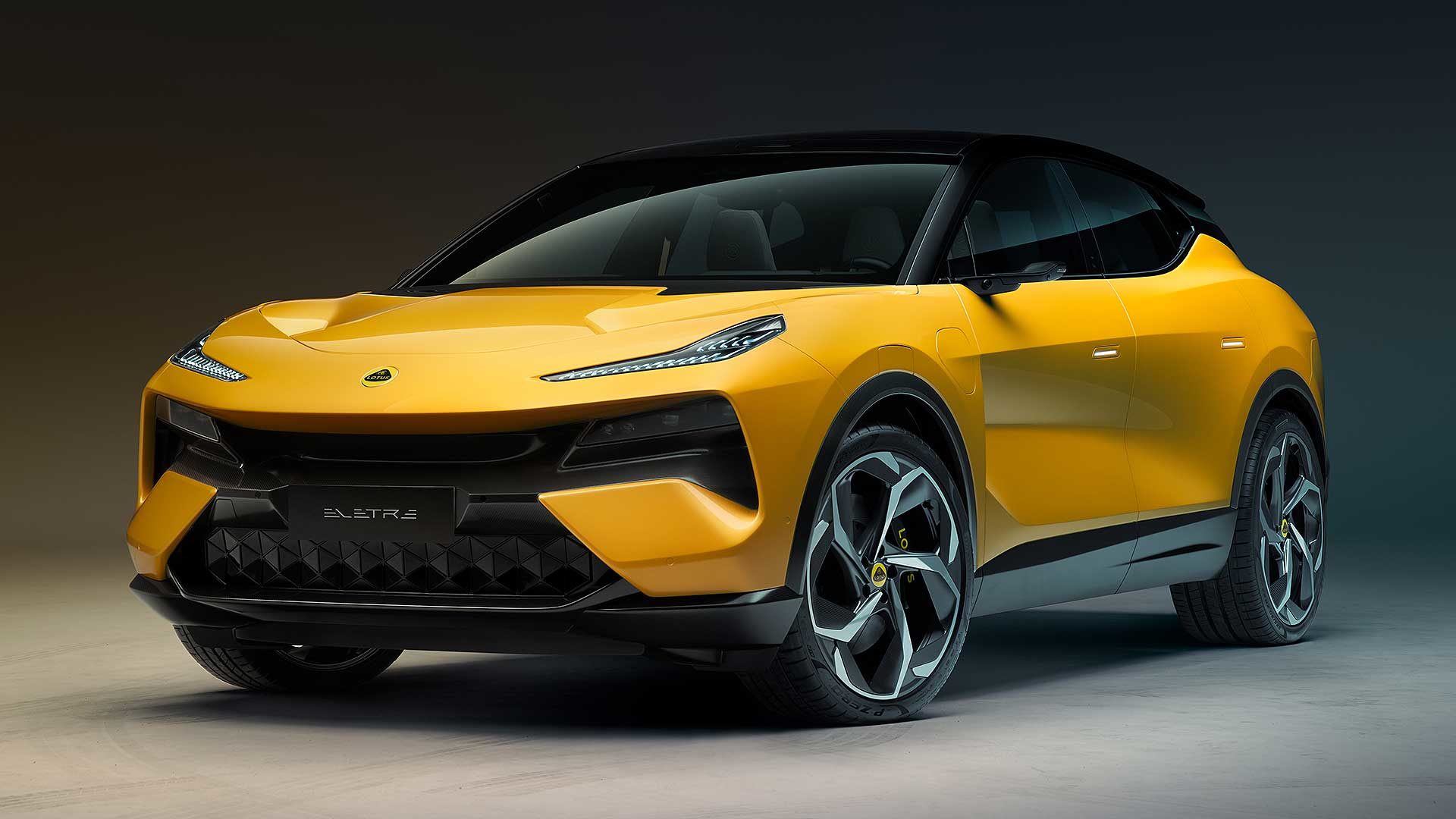
The new Lotus Eletre electric SUV has been revealed in London. Its mission: to transform the British sports car brand into a genuine global great. Company MD Matt Windle describes it as “a momentous point in our history,” which will introduce the Lotus brand to an entirely new audience – and a huge one at that.
Set to make Lotus sales skyrocket, the Eletre will be built in Wuhan, China for a global SUV audience, who up until now only had a limited selection of models – notably the bulbous Tesla Model X – to choose from. Lotus has delivered a thrilling new alternative.
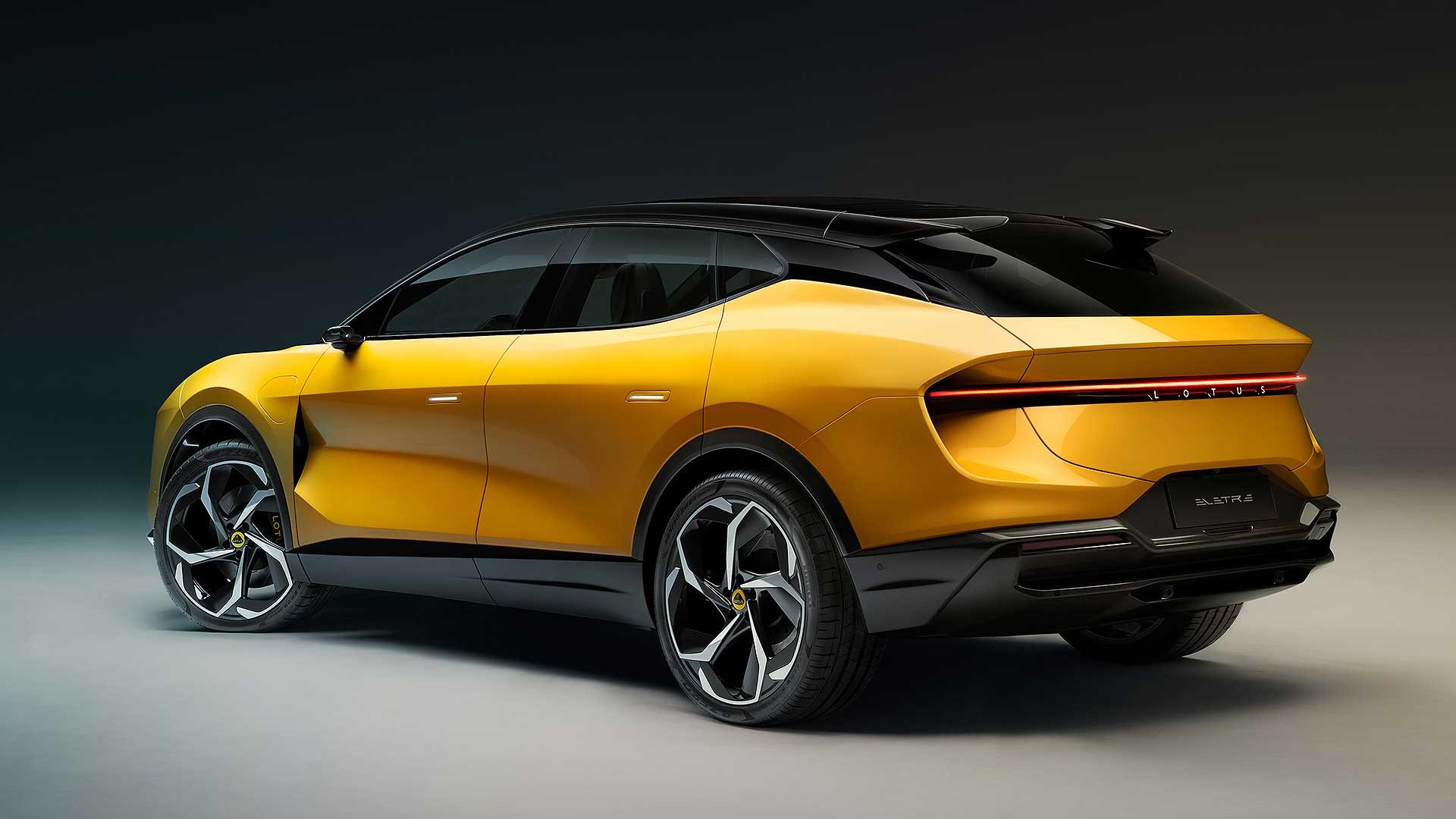
The Lotus Eletre, described as the “world’s first electric hyper-SUV”, will have several power outputs, starting at no less than 600hp. That means 0-62mph in under 3.0 seconds and a top speed of 161mph.
A large car – over 5.1 metres long and 2.1 metres wide, similar to (but appreciably lower than) a Range Rover – Lotus will fit batteries of at least 100kWh capacity, for a target driving range beyond 370 miles. Find a 350kW Ionity charger and 248 miles of range can be added in just 20 minutes.
Set to go into production later in 2022, Windle says the Eletre is “a clear signal of our ongoing desire to transform our business. It is a true Lotus, and we’re confident it will delight performance car customers and offer a distinct alternative to the segment’s established players.”
Designing the Lotus SUV
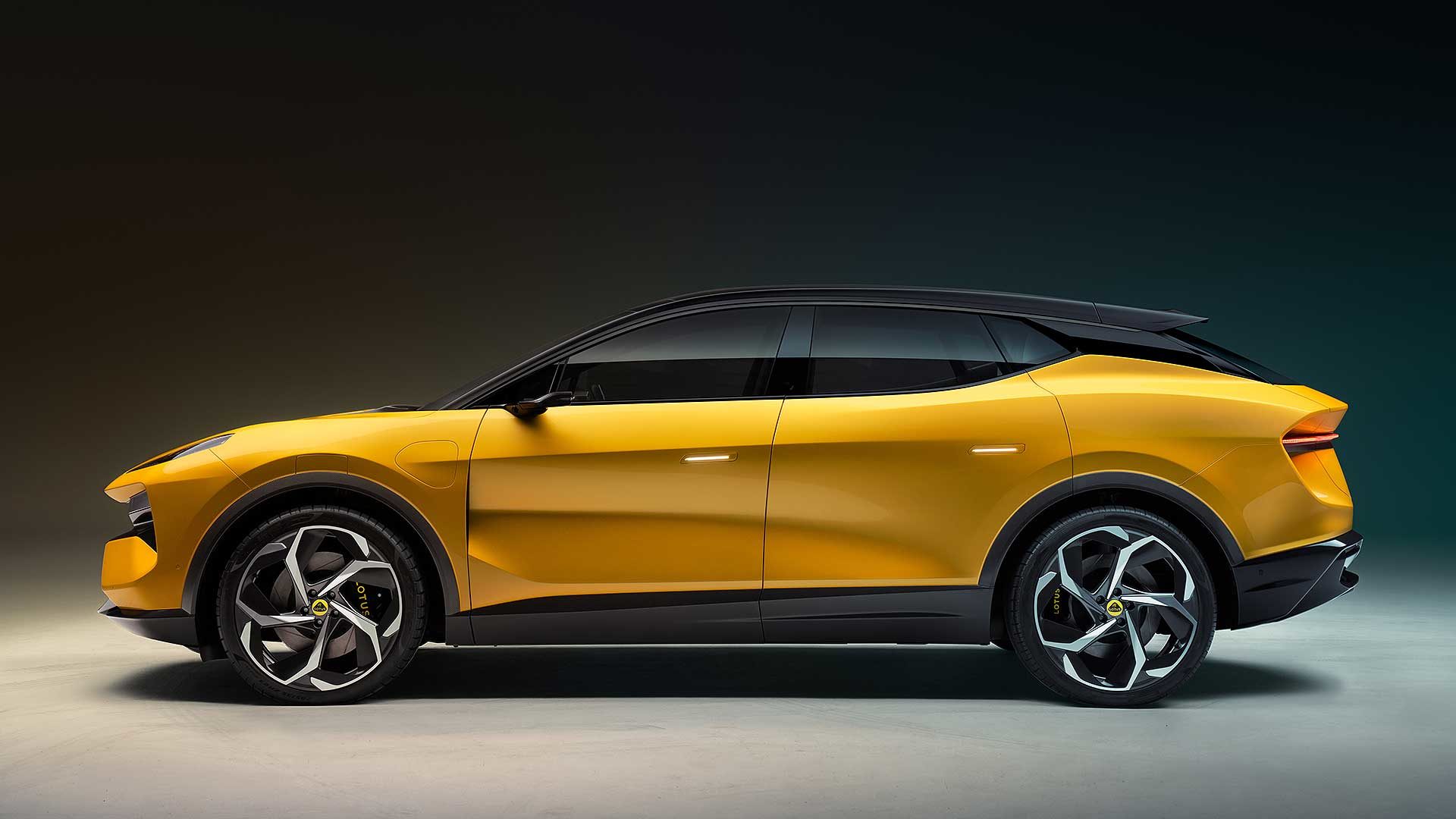
Windle is keen to insist the Eletre (pronounced El-etra) is a genuine Lotus, with high standards of ride and handling, steering and aerodynamics. It’s a true global effort: engineers in Hethel defined the key attributes, before development teams in China, Sweden and Germany got to work. Lotus describes it as ‘born British, raised globally’.
The exterior has also been developed by an international team, based at the new Lotus Tech Creative Centre in Warwickshire. It was led by chief designer Ben Payne, who created a cab-forward look with short overhangs, aided by the lack of a petrol engine up-front (and faithful to Lotus mid-engined sports cars). The aim was to create a high-riding sports car, rather than a bulky SUV.
Advanced aerodynamics give a look of ‘porosity’, where air is allowed to flow through the car, as well as over and under it. There are numerous defined airflow channels, similar to those seen in the Evija electric hypercar, which the Eletre’s design references – particularly at the front.
Instead of door mirrors, the Eletre has rear-view cameras. Door handles are flush, the windscreen has an aggressive rake and there’s an ‘air blade’ at the rear, all to help reduce drag. This aerodynamic flow has been central to the ‘kinetic’ feel of the Eletre’s design.
The premium Lotus
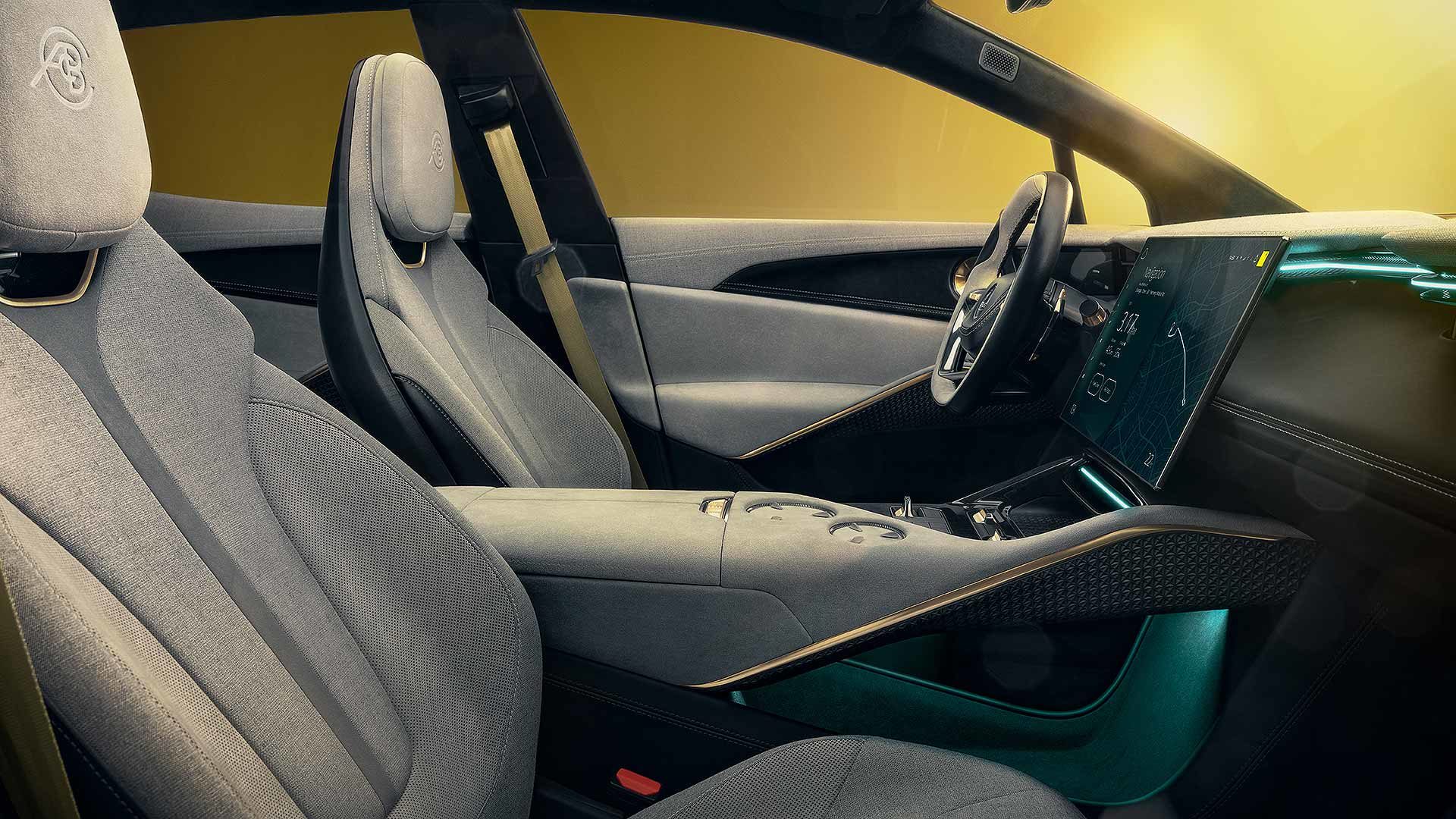
Lotus boldly says the gorgeous interior takes the brand ‘to an unprecedented new level’. The ‘ultra-premium materials’ promise an ‘exceptional’ experience.
It’s also sustainable, with ample use of trims from eco producer Kvadrat, along with wool-blend fabric seats. The material is 50 percent lighter than leather, meaning Lotus is sustainably adding lightness. Even the many carbon fibre elements are made from recycled fibres, creating a marble-like weave rather than the traditional blocky carbon pattern.
The Eletre comes as either a five-seater or a more luxurious four-seater. For the first time, Lotus is able to stress its practicality, including a wireless smartphone charger in the centre console, two cupholders that sit flush to the surface until needed, and door pockets that hold a litre bottle.
Choose the two-seat rear and occupants get a central 9.0-inch infotainment screen with their own wireless charging tray beneath. And speaking of infotainment…
The world-class Lotus
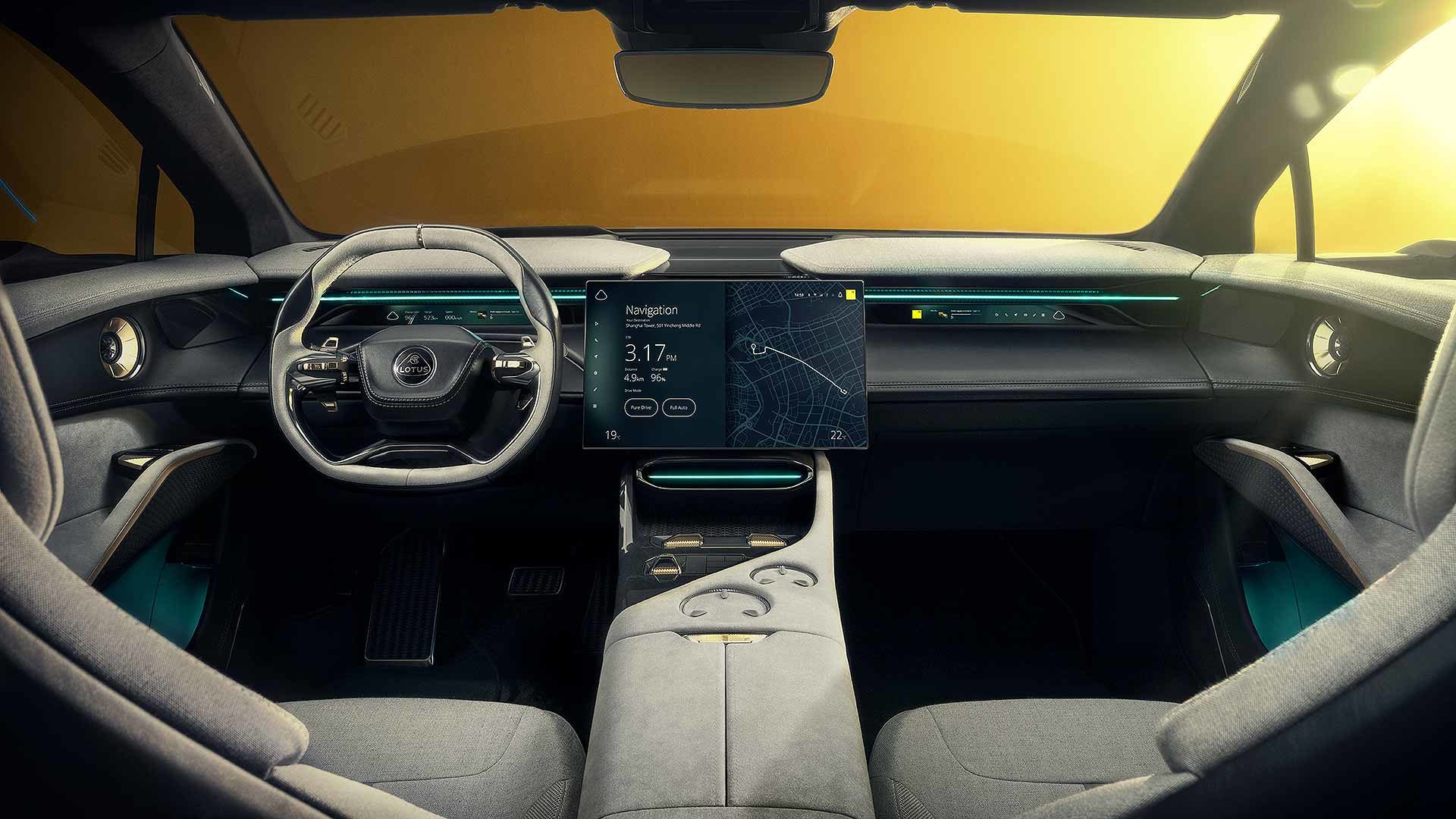
Lotus insists the Eletre’s infotainment ‘sets new standards in the automotive world’. Teams in Warwickshire and China have collaborated on the system, which boasts ‘pioneering intelligent technologies’.
It’s all located in a ‘ribbon of technology’ that runs the full length of the dashboard. Both driver and passenger have their own display screens, which are slim strips 30mm high; the driver gets key journey and vehicle information, while passengers see music or navigation info.
The centrepiece is a 15.1-inch OLED touchscreen, which folds flat when not required. While comprehensive, it’s also said to be accessible. With three touches of the screen, users can access 95 percent of the Eletre’s functionality.
Further information pops up on the driver’s head-up display, which even features augmented reality tech – standard on every Eletre.
Lotus hasn’t forgotten the importance of buttons, though. Key controls still have physical hard keys, in ‘another nod to the simplicity for which Lotus is famed’. Voice control is available, too.
The self-driving Lotus
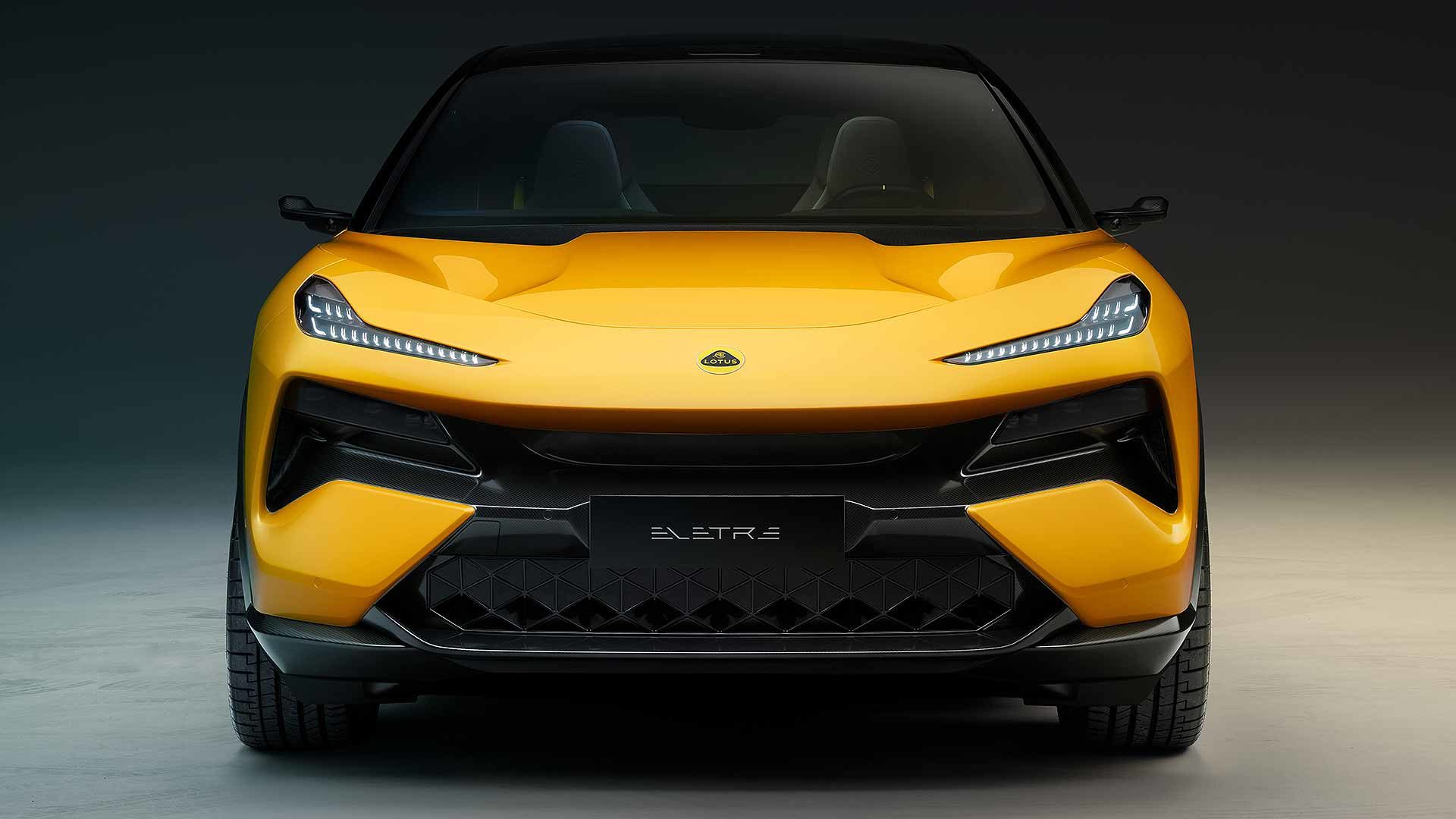
The Eletre is equipped with a raft of ADAS driver assistance systems, which are ready to be boosted via 5G over-the-air (OTA) updates.
There’s also a world-first deployable LIDAR system, which pops out of the top of the windscreen, the rear glass and front wheelarches, but only when required.
The LIDAR readies the Eletre for autonomous driving. Right now, this will involve auto-parking via a smartphone at either end of a journey, but ‘further capability can be added via OTA software updates as and when allowed by local market regulation’.
As soon as a country green-lights self-driving, the Eletre will be ready to capitalise on it. Lotus: for the self-drivers.
The true Lotus
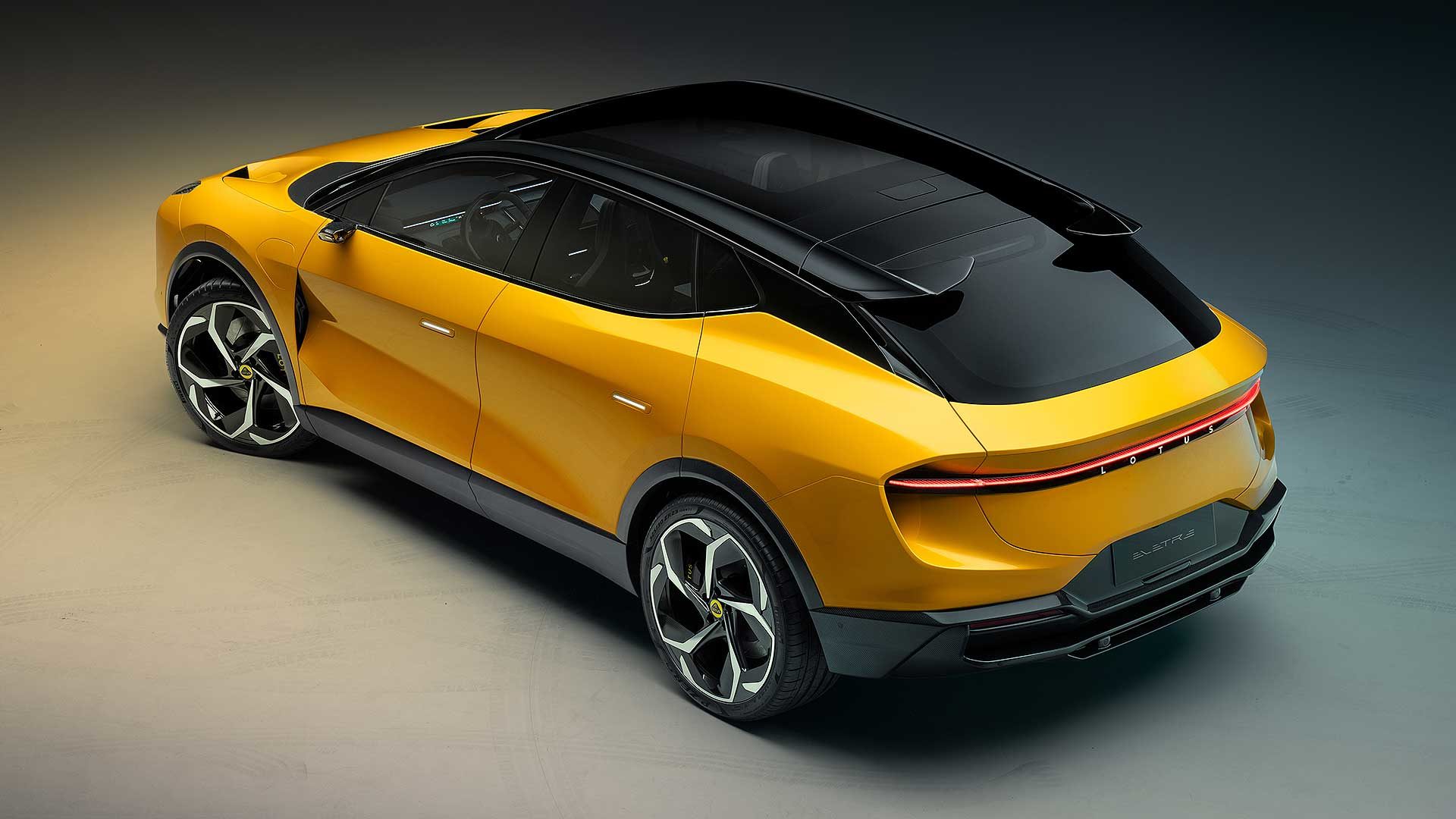
For now, the driver is centre-stage, and Lotus’ renowned dynamics guru Gavan Kershaw says the Eletre “delivers everything you would expect from a Lotus – outstanding ride and handling, highly communicative steering and exceptional driver engagement.
“We know the world is watching, so there has been an obsession with getting everything just right. It’s a world-class product and a true Lotus. Everyone is delighted with it.”
The Eletre is based upon a new platform for Lotus, called Electric Premium Architecture, or EPA. It uses a mix of aluminium and high-tensile steel, with the batteries mounted low to the ground for a planted centre of gravity.
Five-link rear suspension is exotic, as are standard air springs and adaptive dampers. Optional active ride height, active rear steering, active anti-roll bars and torque vectoring are all available. There are four drive modes, too – one of which includes an off-road setting. Expect to hear more on that soon.
Not only is it the first Lotus SUV, the Eletre is also the first Lotus with five doors, and its first lifestyle EV. If you like it, there will be plenty more where this came from, with Lotus saying it’s the first of three new ‘lifestyle’ EVs due in the next four years.
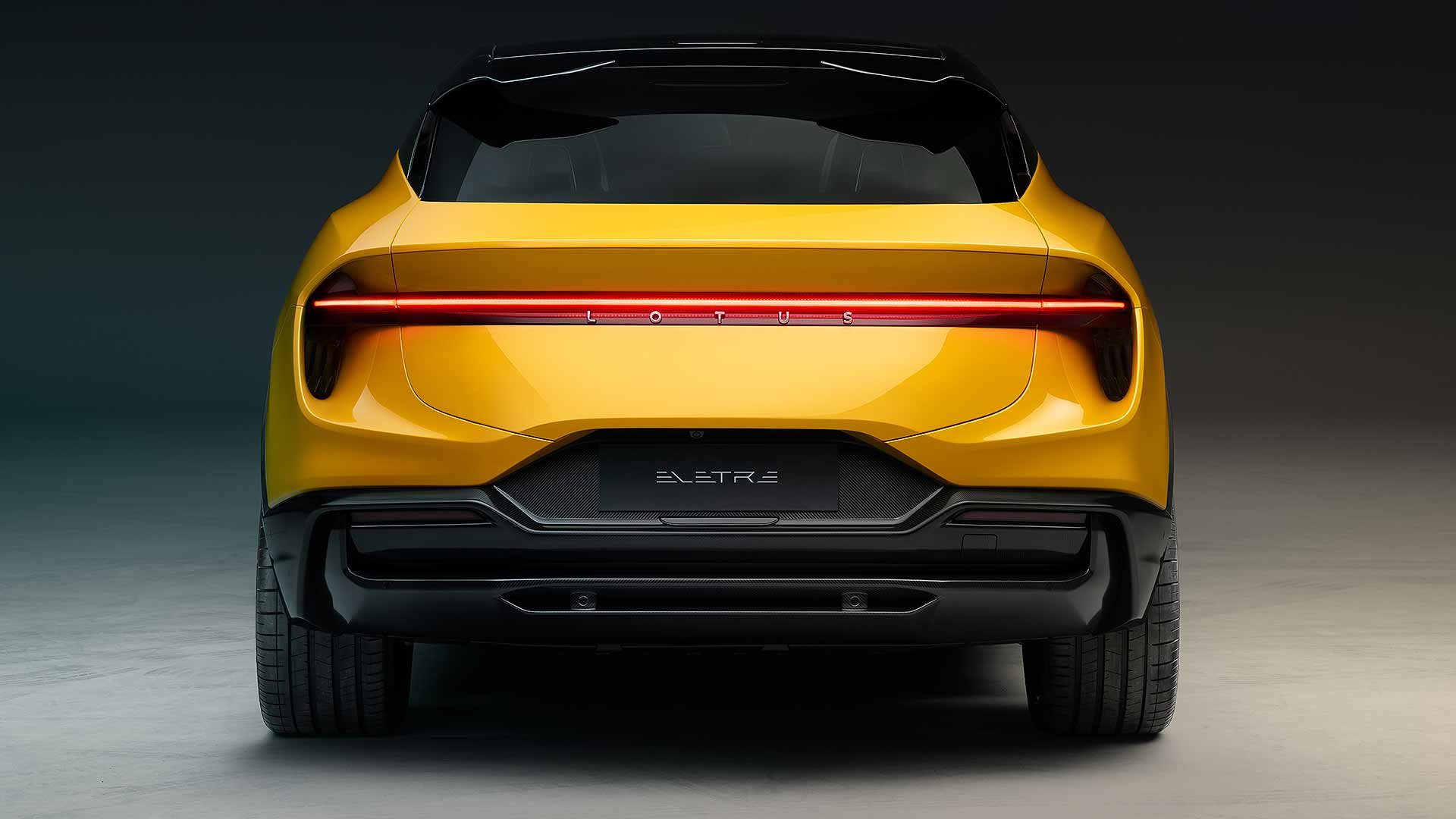
We’ll learn more about Eletre in coming months, as the build-up to its production commences. However, the company is bullish: “It is a true Lotus, and we’re confident it will delight performance car customers,” says Matt Windle.
CEO Feng Qingfeng adds: “It is a compelling alternative for those who desire a true driver’s car, but whose lifestyle demands something more practical than a traditional sports car.”
Alongside the Emira sports car, the firm says the Eletre delivers the perfect two-car garage from Lotus. It’s a huge milestone in the firm’s seven-decade history. With Eletre, Lotus is going global, and entering the big time at long last.
ALSO READ
Bentley Mulliner creates one-off Bentayga ‘inspired by outer space’